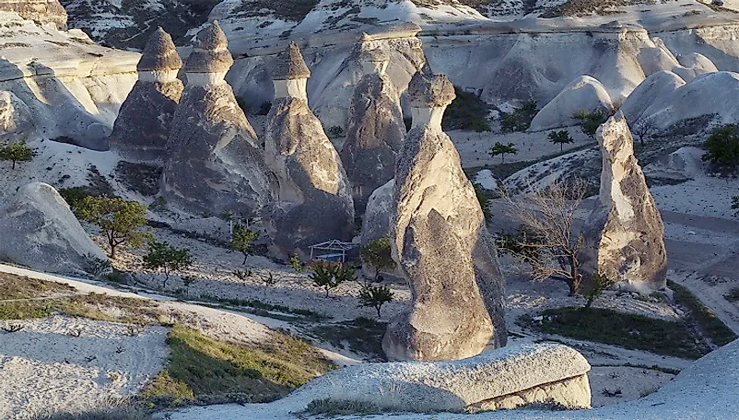Hoodoos, Fairy chimneys, earth pyramids and tent rocks have many different names, but these weird bandland rock formations are one and the same. An They can be found in various iterations across the planet. They are typically consist of relatively soft rock topped by harder. They are less easily eroded stane that protect each column from the elements. They generally form within sedimentary rock and volcanic rock formations.
How Are Hoodoos Formed? Hoodoos are formed over many centuries through a combination of physical and chemical weathering forces, including wind and acid rain. If you've ever seen one that's capped by a sturdier stone, it's because the soft rock beneath it has slowly been eroded by rain. The most powerful process that helps sculpt these rocks into top-heavy columns or cones, though? That would be a phenomenon known as frost wedging. All hoodoos start as an intact plateau. Over time, the plateau may break down into a "fin," a narrow wall of hardened sedimentary rock, then into arches, then, ultimately, into potentially wonky standalone columns... The fifth and final stage of a hoodoo's life is its disappearance. Due to their ever-eroding tendencies, hoodoos have a relatively short geological lifespan when compared to other rock formations. Here's the science behind these surreal formations—plus, 10 incredible hoodoos around the planet.




